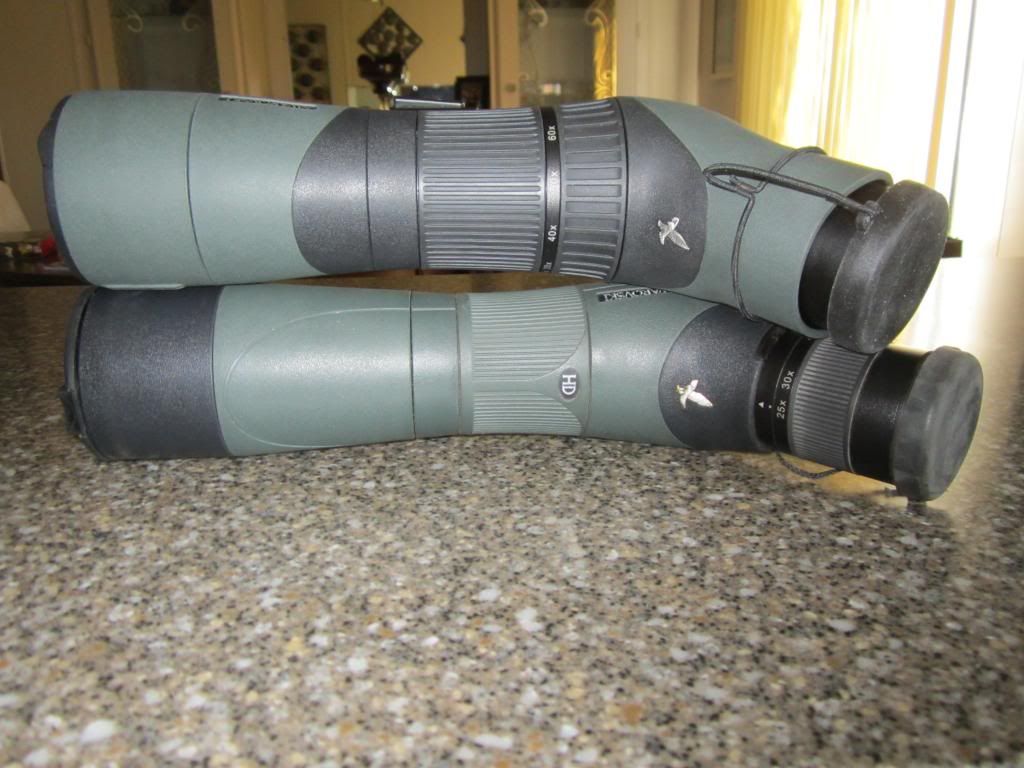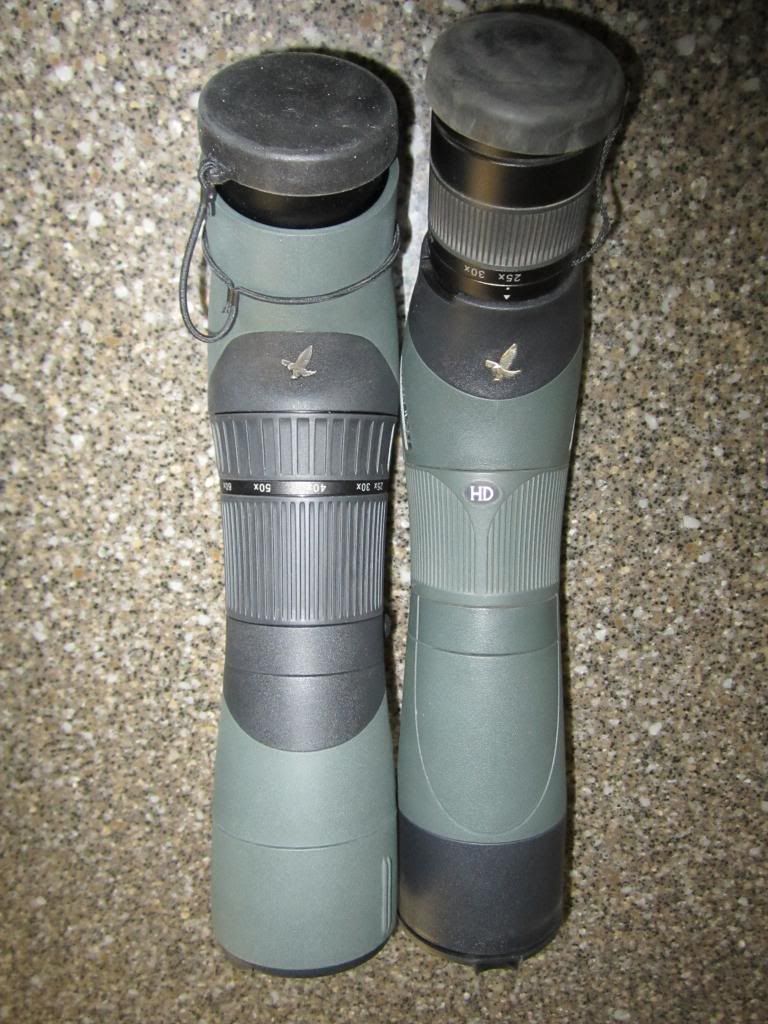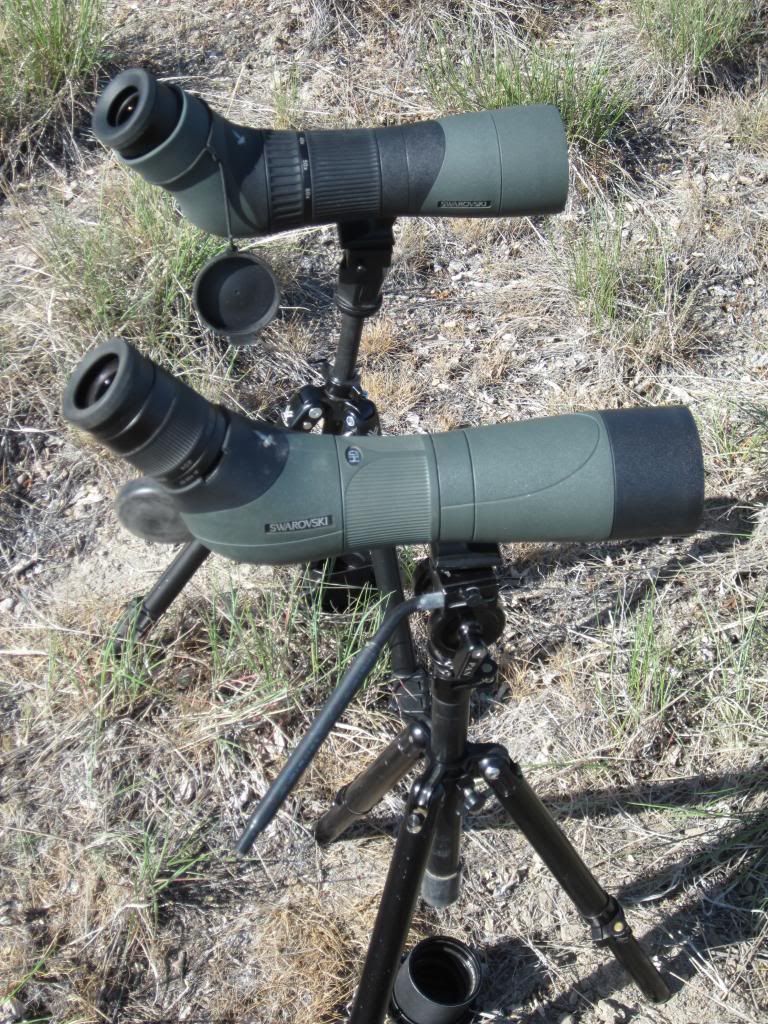fatrascal
WKR
Recently I purchased the ATX with 65mm objective and the 95mm objective. I already owned the ATM 65mm in HD with 25x50 zoom eyepiece so I decided to do a little comparison. The ATM is the same scope as the ATS but was made with a different metal which made it 2 ounces lighter but I cannot find the ATM for sale any more so I will consider this test as a comparison between the ATS and the ATX.
Optically in the middle of the day outside in my back yard looking at the leaves of a tree I could not see a difference in the quality between the two scopes. That may be different in low light hours. My ATM does not have the swarovision and the flat glass like the ATX has so if I was looking at an eye chart I would expect to see a little distortion around the edges of the ATM but none in the ATX.
The ATS, according to the specs on Swarovski's website is 12.8 inches long with the 20x60 eyepiece being another 3 inches long and the 25x50 eyepiece being 3.3 inches long.
The ATX is 13.3" long with no specs on the ocular or the objective given seperately. When you lay one scope on top of the other you can plainly see that the ATX with 65mm objective is shorter in length than the ATS with 25x50 eyepiece as shown in the picture below.

Optically in the middle of the day outside in my back yard looking at the leaves of a tree I could not see a difference in the quality between the two scopes. That may be different in low light hours. My ATM does not have the swarovision and the flat glass like the ATX has so if I was looking at an eye chart I would expect to see a little distortion around the edges of the ATM but none in the ATX.
The ATS, according to the specs on Swarovski's website is 12.8 inches long with the 20x60 eyepiece being another 3 inches long and the 25x50 eyepiece being 3.3 inches long.
The ATX is 13.3" long with no specs on the ocular or the objective given seperately. When you lay one scope on top of the other you can plainly see that the ATX with 65mm objective is shorter in length than the ATS with 25x50 eyepiece as shown in the picture below.



